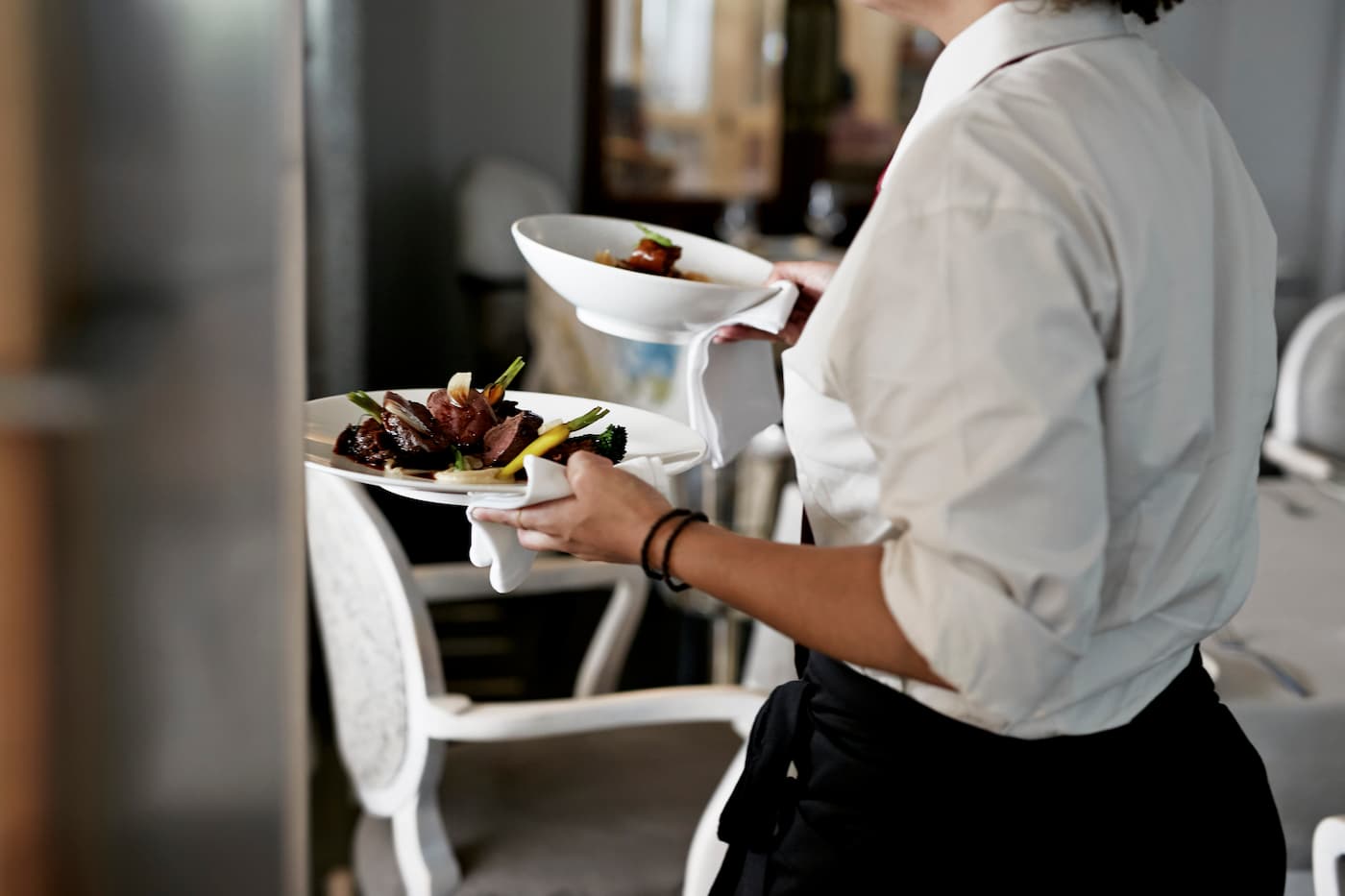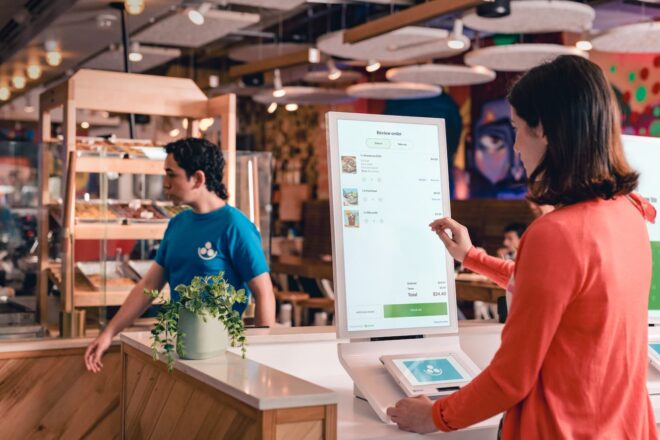The 10 best non-slip restaurant work shoes for chefs and servers
Editorial Team
7 min read
Restaurant workers usually have their own list of must-have items. Bartenders don’t kick off service until they’re equipped with a wine key and extra bar towels, while your chef garde-manger is going to lay out knives and ensure the mise en place is ready to go.
While restaurant shoes may not be at the top of their lists, a good pair is one of the most essential components of a well-thought-out uniform. Here’s what you should look for in selecting a good pair of slip-resistant restaurant shoes, plus some brands you should consider as you hunt for your new favorite pair.
Why non-slip restaurant shoes are important
You’ve already put in a ton of time and effort to build a stellar restaurant staff, but if your employees aren’t showing up in the right footwear, they may not be able to operate efficiently, effectively, or safely.
The best restaurant server shoes are made to accommodate the occasionally hazardous environments workers commonly come across in restaurants. Spilled mop water, drips from the iced tea machine, discarded food, slick floors — all potential dangers — and shoes that are short on traction can increase the risk factor significantly.
Shoes designed for use in restaurants are designed to be more protective overall. They often have thicker walls and more supportive soles than street shoes, protecting feet from fatigue, as well as from falling objects.
Help push the importance of correct footwear by including a list of benefits and even a shoe mandate when writing an employee handbook for your restaurant. It can be difficult to make your staff purchase a specific brand unless you’re willing to pay for them, but you can require that all employees wear shoes that are non-slip and otherwise appropriate for front- and back-of-house environments.
What to look for in restaurant shoes
What do the best non-slip shoes for restaurant workers look like?
Ideally, the shoes you and your staff choose should check all the following boxes:
- Comfort/arch support: Most restaurant workers are going to be running circles around the dining room floor and/or kitchen for a minimum of six to eight hours. Make it a double shift and you could be looking at 12 hours or more of waiting tables, slinging drinks, or managing your team. Comfort matters. Shoes should have decent arch support, ample room in the toe box, and secure closures to help prevent sore, tired feet.
- Grip/non-slip feature: Non-slip grip is non-negotiable. Anyone who has worked in a restaurant for any length of time has likely witnessed at least one employee try to get through a shift on less-than-optimal shoes for miscellaneous reasons. Look for shoes that boast about their grip, and try them out on tile and hardwood floors before purchasing.
- Protection: Non-slip shoes can offer protection from spills and just-mopped hallways, but they should also protect your feet from other risk factors such as a steak knife that falls off a plate as the server is clearing tables, or a box that’s knocked over during inventory. Look for shoes with thick, protective, water-resistant uppers — they’ll help safeguard feet, be easier to wipe clean, and last longer, too.
- Durability: Speaking of long-lasting shoes, no one wants to replace their footwear every couple months. It’s usually worth spending a bit more for shoes that fit well and are made with durability in mind.
Some of the best restaurant work shoes
As you kick off your shoe shopping expedition, remember to have the list of must-have features in hand. Here are some of the best restaurant shoes on the market to help you narrow your search.
- Dansko Clogs — Dansko clogs are a culinary classic. Chefs love these shoes because they sport a memory foam footbed that’s cushy without being too soft, and the shoes don’t shift, which means you won’t get blisters working brunch. Because of that close fit, though, you’ll want to try on your Danksos in person whenever possible; you won’t get a lot of wiggle room otherwise.
- Sanita Clogs — Sanita has developed a reputation among hospitality employees for not only being comfortable, but also for actually helping to relieve back, knee, and foot pain that so often comes with being on your feet for extended periods of time. Their professional collection comes in tons of different colors and patterns, and the full back wrap (versus just a strap) can feel more secure.
- Birkenstock Slip-Resistant Shoes — There are several types of Birkenstock shoes that are ideal for restaurant environments, including the Birkenstock Professional Unisex Slip Resistant Work Shoe and the brand’s Tokyo Super Grips. The benefits are right there in the product names (slip resistant and super grips, hooray!), but Birkenstock’s commitment to quality and use of breathable leather are also major pluses.
- Croc Bistro Clogs — Crocs are slip-resistant, easy to clean, and super comfy, but the heel-strap design won’t be right for everyone, and they may be more suitable for back-of-house workers than FOH employees.
- Skechers Slip-Resistant Work Shoes — Skechers says their slip-resistant work shoes are “industry-tested and approved.” There are tons of designs and colors ranging from sneakers to back-strapped clogs in black, Dr. Seuss-inspired patterns, and more, so there’s almost guaranteed to be something for everyone.
- Snibbs — This is a new entry to the restaurant footwear market, and their claim to fame is that the shoes are designed by an orthopedic surgeon. Makes sense because these non-slip restaurant shoes are also breathable and supportive, and as an added bonus you can try them out for 30 days and still get a refund if the fit just isn’t quite right.
- Emeril’s Footwear — Bam! NOLA’s king of cuisine, Emeril Lagasse, has created a line of footwear that caters to everything restaurant workers want: shoes that won’t slip, stain, or stink.
- Merrell — Merrell specializes in footwear used for active pursuits such as hiking and trail running, as well as shoes and boots meant to stand up to winter weather. Their work line has a lot of options suitable for construction sites and industrial jobs, but there are also slip-ons that could be great for FOH or BOH staff.
- Keen Footwear — Check out Keen for footwear that boasts heel-to-toe support and “air-infused comfort.” In other words, they’ll feel great as you set tables or chop veggies and extras like KEEN.WET TRAX even channel liquids to increase stability and safety.
- Keep Company — This brand hits all the big asks like non-slip soles and water-resistant uppers, but they carry the added bonus of being produced using vegan materials and ethical processes.
Front of house vs. back of house restaurant shoes
There are many benefits to creating uniform code and overall guidelines that help ensure cohesive front of house and back of house. Employees that dress similarly are more likely to feel like they’re part of the same team, and it also projects a professional look that guests are likely to notice and appreciate.
While your cooks and your bussers probably won’t be wearing the same pants and shirts, there is a lot of overlap between FOH and BOH restaurant footwear. For starters, everyone needs slip-resistant restaurant shoes. They also need shoes that are comfortable, protective, and water-resistant (not waterproof, which traps moisture and can make for very sweaty feet), and no one should be wearing shoes with a high heel or open toe.
But aesthetics aren’t as universal. The best shoes for a waiter may be ones that meet the above criteria, but that also match the front-of-house uniform and look stylish. Back-of-house workers still need shoes that look professional, but it may not be as important for them to be presentable, as it’s not as common for line cooks and sous chefs to wander through the dining room.
Run your restaurant more efficiently with Clover
Working to get your employees outfitted correctly is an important part of running your business. Clover can also help you run your operation more efficiently. We offer a wide range of business management and restaurant POS solutions for all types of dining experiences. Contact a Clover Business Consultant to learn more.
CONTACT SALESRelated Posts
Quick Service Restaurants (QSR)
How to choose a self-ordering kiosk for restaurants
Make hiring easy with JazzHR
Popular Topics
Stay in touch
Sign up and learn more about Clover.
Thank you for your subscription!
More posts about starting a small business
eBook





